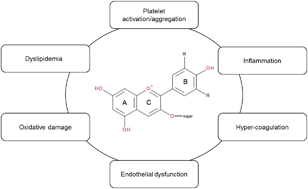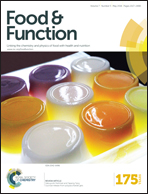Anthocyanins in obesity-associated thrombogenesis: a review of the potential mechanism of action
Abstract
Platelet dysfunction, oxidative stress and dyslipidemia are important contributors to pro-thrombotic progression particularly in obese and hyper-cholesterolemic populations. Becoming an increasingly widespread endemic, obesity causes a dysfunction in the metabolic system by initiating endothelial dysfunction; increasing free radical production; lipid peroxidation; platelet hyperactivity and aggregation; thereby accelerating thrombogenesis. In the event of increased free radical generation under pro-thrombotic conditions, antioxidants act as scavengers in reducing physiological oxidative stress; free radical-mediated thrombosis and hemostatic function. Anthocyanin, a subclass of the polyphenol family flavonoids has been shown to exhibit anti-dyslipidemic and anti-thrombotic properties by virtue of its antioxidant activity. Current anti-platelet/coagulant therapeutics target specific receptor pathways to relieve the extent of dysfunction and plaque acceleration in pro-thrombotic individuals. Though effective, they have been associated with high bleeding risk and increased response variability. The following review focuses on the potential role of natural dietary anthocyanins in targeting simultaneous mechanistic pathways in alleviating platelet activation, dyslipidemia, and oxidative stress-associated thrombus acceleration in obese pro-thrombotic populations.


 Please wait while we load your content...
Please wait while we load your content...